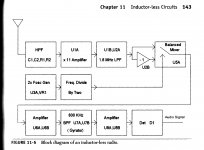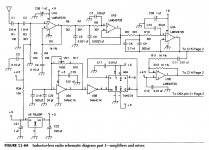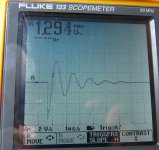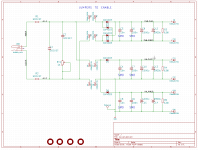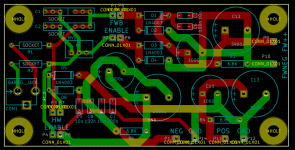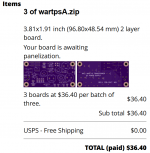I enjoyed Ron Quan's book "Build Your Own Transistor Radios". He writes about the good old days at Ampex, in the Preface.
edit- couple figures from his book attached below.
edit- couple figures from his book attached below.
Attachments
Last edited:
I went to the AA meeting of linear designers on Sunday, when everybody else was watching the big game. Most of you, who sometimes attend, were not there, but I had a very good time talking in depth with Kieth Johnson, who I consider a true competitor, and colleague; much like Charles Hansen.
I would like to have talked with Keith, it's just the changing of the times more and more of the old guard are having a hard time traveling or finding the interest in their work dwindling. This happened before, Jim Williams would host the parties at his house fancy catering and all and EVERYONE was there. When digital audio and digital cameras were new and hot the interest in analog shrunk to the point that Bob Pease, Paul Brokaw, and I had pizza across the street from the Marriott with 4 grad students.
There were certainly enough people at the AA meeting last Sunday. Of course, most of the 'old guard' are gone, but there were plenty of active engineers in the industry there.
Hi John,
Glad to hear you had a good time. May there be many more.
-Chris
Glad to hear you had a good time. May there be many more.
Okay, so what are they? Maybe some of us are measuring them.the guy who still measures NEW distortions that others tend to ignore.
-Chris
Member
Joined 2009
Paid Member
Yep, to display the waveform of the current "I" on an oscilloscope, just splice your current sensing resistor in series, then differentially measure the voltage across that resistor using an IA. Required bandwidth is under 1 Megahertz and required gain is under 100X. I'll let someone else calculate the required CMRR @ 100 kHz.
_
so just ground one end of the resistor you insert, make sure the rest of the circuit has no grounds and you're good. Nobody said ground can't be moved.
Does this mean there is no need for differential amplifier plug-ins like the Tektronix 7A22? Just move the ground and connect one probe to the "deltaV" as a signal-and-ground, yes?Nobody said ground can't be moved.
so just ground one end of the resistor you insert, make sure the rest of the circuit has no grounds and you're good. Nobody said ground can't be moved.
Floating an entire instrument is not always practical nor does it always work. Measuring between two points in a circuit where the impedance to "the rest of the world" matters at both points requires something like a 7A13 or 7A22 that's why they exist. Yes, inserting a current sense resistor and measuring DC drop with a 9V powered handheld DVM usually works not a universal solution.
I think the battery powered Fluke 123* handheld oscilloscope, plus a current sense resistor whose R is smaller than the transformer secondary copper resistance, would correctly display the current waveform in the Vendetta Research "transient perfect crossover" transformer's secondary. DIYA member GaryB used it to make a similar measurement, figure below.Yes, inserting a current sense resistor and measuring DC drop with a 9V powered handheld DVM usually works not a universal solution.
*Bandwidth = 20 MHz
Attachments
R is smaller than the transformer secondary copper resistance
*Bandwidth = 20 MHz
DC resistance and 20Mhz don't mix. This is an instrumentation problem maybe the answer is OK maybe not.
Scott, the reason why you want the current sensing resistor to be less than the real part of the other impedances (e.g. copper resistance), is to make sure the insertion of the current sensing resistor does not radically change the "Q" of the LRC resonant circuit in the transformer secondary. The purpose of monitoring the current in the Vendetta Research "transient perfect crossover" power transformer secondary, is to confirm or refute the hypothesis that the 1N4003 diodes + extra-large leakage inductance of crappy wall wart trafo with 12 foot go-and-return cable, give rise to unacceptably enormous ringing. Jan Didden doesn't want to use a "boatanker" Tek 7000 mainframe scope just to get the 7A22 differential amp plugin. John Curl wants to know if a $1500 current-probe would give a similar result. I'm suggesting that a low valued current sense resistor, plus a floating, battery powered oscilloscope, gets you there for a lot less money and a lot smaller "boatanker"-ness.
If there is concern about stray coupling at 20 Mhz with a battery powered scope, the normal field expedient method of moving the probe cable and scope around while looking for evidence of changing signal display might be good enough to get an idea if the test setup could reasonably be trusted.
Some understanding of theory and experience with sensitive measurements obviously helps too.
Nice to have all the best test equipment though. Not everybody does for DIY use, unfortunately.
Some understanding of theory and experience with sensitive measurements obviously helps too.
Nice to have all the best test equipment though. Not everybody does for DIY use, unfortunately.
I kinda like the boatanchor Tek mainframes. Never had bench space for one at home tho. One day...
[snip]Jan Didden doesn't want to use a "boatanker" Tek 7000 mainframe scope just to get the 7A22 differential amp plugin. [snip]
Last year I did buy a Mooshimeter to be able to do simple floating measurements, $ 150. No replacement for a wideband scope with floating inputs, but good enough in 80% of the cases.
https://moosh.im/mooshimeter/ watch the YouTube.
Jan
Last edited:
How about the AM502 + TM501 combo instead of 7000er 'boat anchor' with 7A22? Nice and compact.
AM502 - TekWiki
TM501 - TekWiki
AM502 - TekWiki
TM501 - TekWiki
Thanks Mark for the 'floating scope' tip. I happen to own a battery powered digital scope, as well as a 7000 mainframe. I forgot that the battery powered scope could work so easily in this application.
Good deal, John. I just bought this battery powered scope today, to try out some of those ideas myself. Taped out a test vehicle PCB as well; schematic and layout attached. Thank God for OSH Park's cheap and quick prototyping service.
_
_
Attachments
Thank God for OSH Park's cheap and quick prototyping service.
receipt below. Cheap!
Attachments
- Status
- Not open for further replies.
- Home
- Member Areas
- The Lounge
- John Curl's Blowtorch preamplifier part II
